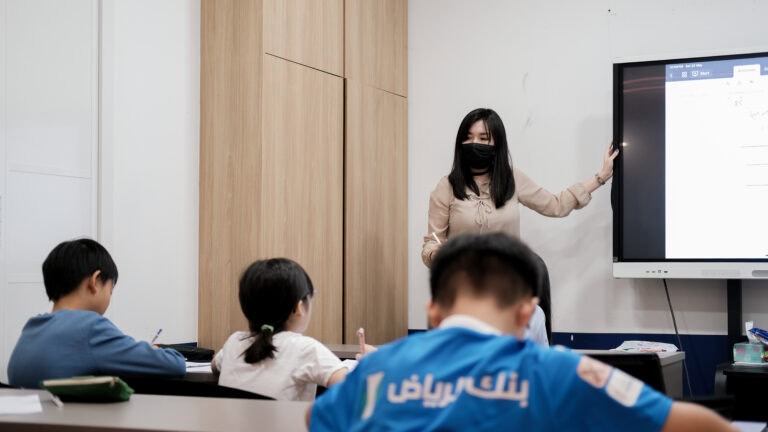I. Controversy 1: Unrealistically Challenging Questions

For years, the Singapore Examination and Assessment Board (SEAB) has drawn much flak from disgruntled parents. Its alleged sin? For setting unrealistically challenging questions in the PSLE Mathematics paper.
In fact, did you know that a number of Singapore’s PSLE Mathematics questions were deemed so innovatively mind-boggling that they gained international notoriety? These questions have fueled the long-standing debate as to whether the PSLE is too difficult or too early for a twelve-year-old child. Let us revisit some of these questions that put Singapore Mathematics on the world map.
2017 ‘Ribbon’ Question

2019 ‘Semi-circles’ and Number Pattern Questions

2020 Shapes Pattern Question

2021 ‘Helen & Ivan’ Question

Undoubtedly, these questions are challenging. And they were deliberately meant to be so. These questions are what we call “AL 1⁄2 differentiators” because, as the name suggests, they were designed to differentiate students who would score AL 1 and AL 2 from the rest. In the PSLE Mathematics paper, a fair percentage of 10% of the paper is reserved for such “AL 1⁄2 differentiator” questions. Most students are not expected to get them right.
Time and time again, the Ministry of Education has said that it only expects a small minority of students to be able to score an AL 1 or 2. The controversy – unrealistically difficult Mathematics questions – arises only because of the pursuit of academic excellence in Singapore. Most parents and students covet the mouth-watering prize that is an AL 1 or 2. Consequently, many parents are up in arms when the challenge of ‘AL 1⁄2 differentiator’ questions are posed to their children in the PSLE.
Instead of being overly critical, parents should understand how the PSLE Mathematics paper is usually structured. This is so that they can see the logic behind the way the paper is set.

As seen from this table, the PSLE Mathematics paper is intended to be easy to pass but difficult to score. What parents should realise is that a very respectable score can still be achieved if their children have their Mathematics fundamentals properly ironed out. This is because the remaining 90% of questions are not only predictable but also manageable with the right amount of practice.
While there is nothing wrong with preparing for “AL 1⁄2 differentiator” questions, parents and students should not obsess over them. It is not a wise strategy to focus too much on them at the expense of the other type of questions which require mastery of the mainstream topics to be able to solve. Not honing one’s competency in mainstream topics is a major pitfall in the PSLE. We would even go so far to say that it is the chief reason why students may underperform for PSLE Mathematics. Underperforming for the PSLE Mathematics brings us to the latest round of controversy that is plaguing the SEAB.
II. Controversy 2: No Transparency of how PSLE Mathematics Papers Are Marked

This year, to the surprise of many, the PSLE Mathematics paper did not require students to perform any mental gymnastics. The consensus is that the questions were fair and within the expectations of teachers, students and parents. As such, you may have thought that the SEAB finally steered clear from the spotlight of controversy.
Unfortunately, that was not the case. The SEAB just could not catch a break.
Shortly after the release of the PSLE results, Channel News Asia (CNA) reported that 11 parents of children from Nan Hua Primary School wrote in to question the marking standard of the PSLE Mathematics paper as well as the appeal process of the PSLE examination. Their gripe was two-fold.
First, their children were all stellar students of Mathematics, consistently scoring “95 marks and above for their math exams in school”. However, for the PSLE, they underperformed and puzzlingly only managed to obtain “AL3, AL4 or AL5”. Alarm bells were raised as to whether children were fairly given credit for the solutions they had used to tackle the problem sum questions. Second, the appeal process lacks transparency as during the appeal, the SEAB would only reveal whether the marks of every section were summed up correctly. They would not release students’ answer sheets for parents to scrutinise.
While we empathise with the frustration of these 11 parents, there are good reasons why students’ answer sheets are kept under lock and key. It is likely that the SEAB wants to keep the number of appeal cases low and manageable. Releasing answer sheets could open the floodgates and see an increase in parents lodging appeals because they want to scrutinise how their children had fared for the PSLE and police how the SEAB marks their children’s papers. This is an undesirable outcome for two reasons. First, it would be a logistical nightmare to respond to hundreds if not thousands of appeals. Second, giving parents too much information to the extent that they can scrutinise and challenge how questions are marked would conceivably lead to more disagreements and arguments. This would not be an ideal state of affairs for anybody. Parents would be further away from obtaining the closure they seek while the SEAB could risk having its reputation sullied and its credibility undermined.As cliché as it is, sometimes we just need to trust the system. A positive is that when interviewed by CNA, SEAB was open about the present saga and did not shy away from addressing the criticism head on. The SEAB has assured Singaporeans that it has the best team in place to ensure “PSLE papers are set according to the syllabus at appropriate standards”. Moreover, “any solution [including the use of algebra] which demonstrates the correct understanding and application of mathematics concepts and skills as requested by the question will be given full credit”. In relation to appeal cases, the SEAB deploys “an independent senior marker” who would “conduct a thorough review of the marking and check the accuracy of mark entries”.
These assurances are the best the 11 parents are going to get from the SEAB. Of course, the mystery still remains unsolved: how was it possible that so many stellar students fell so far down in one examination?
As alluded to earlier, it could very well be the case that these students were not rock solid in their grasp of the mainstream topics. Yes, they might have scored well for their school examinations. But school examinations can never test everything. Under each topic in the PSLE Mathematics syllabus, there are so many different question types. It is entirely plausible that the students might have been confident in the question types their school had tested but not as confident in the question types the PSLE happened to test on that day. To put it in another way, performance in school examinations is not always reflective of how a student would fare for the PSLE.
III. A Little Word of Advice

Alas, all roads lead back to Rome. The controversies surrounding PSLE Mathematics stem from the undesirability of obtaining a far-from-ideal score for the paper. The solution to these controversies is straightforward and the same. Have your child put the bulk of his or her effort into mastering every concept covered by the mainstream topics, and test your child’s application of these concepts by practising as many different questions as possible. By doing this, your child should find the majority of the PSLE Mathematics paper a breeze and would not need to fret too much over the “AL 1⁄2 differentiator” questions. This is because your child would be in a firm AL 2⁄3 position, which, as has been mentioned earlier, is a very respectable score.
Only when your child is supremely confident in the mainstream topics should he or she attempt to take on the ultimate challenge. Contrary to popular belief, “AL 1⁄2 differentiator” questions can be prepared for and taught. For example, children can be taught heuristics to solve challenging problem sums. Similarly, they can also be taught how to identify patterns in numbers and shapes and to visualise how different shapes can be rearranged and formed to solve seemingly mind-boggling questions.
At the risk of sounding like a shameless plug, students enrolled in our Mathematics programme at Think Teach begin to learn heuristics as early as Primary 3. Our students are also introduced to basic numerical, geometrical and spatial visualisation techniques which gradually increase in complexity. All these skills are taught in tandem with exposing our students to every single question type that could be tested under the mainstream topics. When the years roll by and the PSLE arrives, our students are primed and ready for whatever the PSLE throws at them.
Since the beginning, this is how we have chosen to prepare for the PSLE and why we have never found the PSLE Mathematics paper controversial. 2022 was a year of reprieve and so too was 2021. The PSLE Mathematics examinations have never been so easy for some time now. We believe that the reduced level of difficulty in the PSLE Mathematics examinations of 2021 and 2022 was due to the COVID-caused learning disruptions students in those years had faced. However, now that we have become used to living with COVID-19, we predict that the PSLE Mathematics examination will return to its usual level of difficulty.
That said, parents need not be afraid. Appreciate tha the vast majority (up to 90%) of the PSLE Mathematics examination is filled with manageable and predictable questions. Plan your child’s attack strategy by first securing the low-hanging fruit before turning your attention to higher-level questions. This way you ensure that those “AL 1⁄2 differentiator” questions do what they are supposed to do – determine only whether your child scores an AL 1 or 2 and nothing lower than that.




